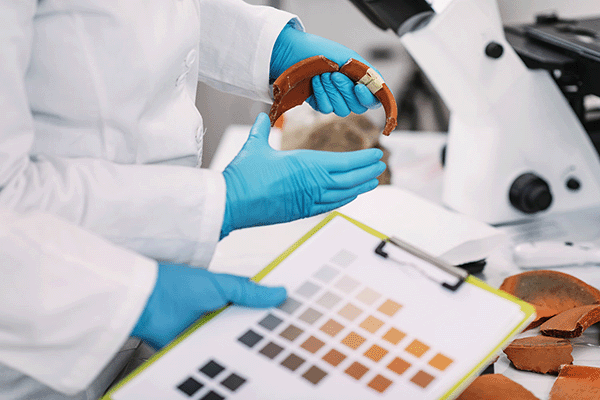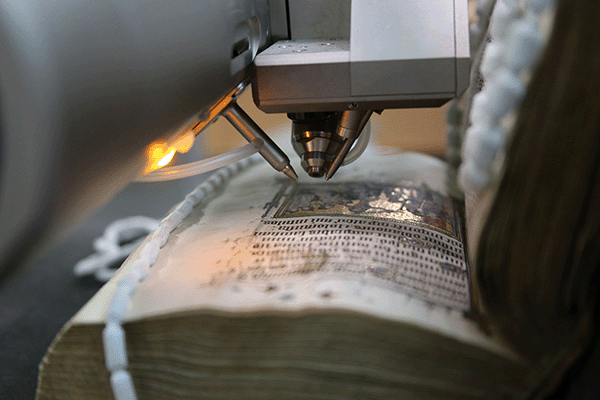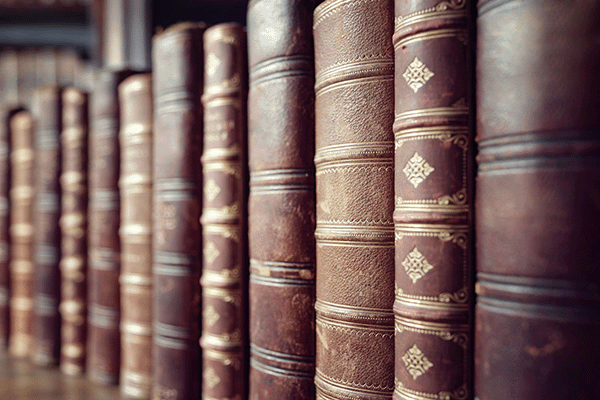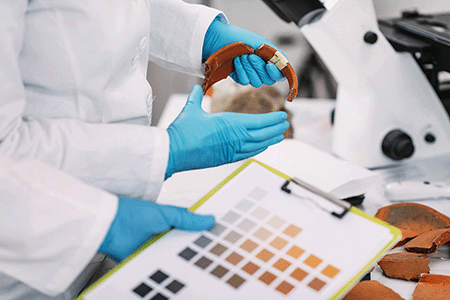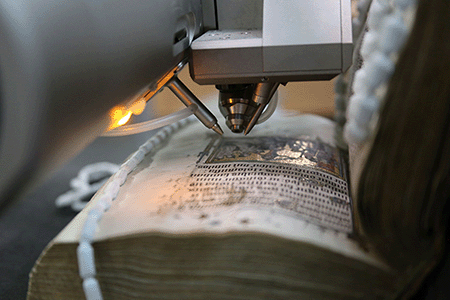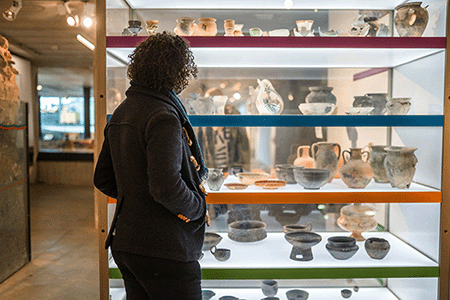The RICHeS team recently visited the University of Aberdeen to meet with colleagues delivering the RICHeS’ funded project Ark of the North: opening up access to animal bone reference collections in northern Scotland. Led by Professor Kate Britton, this initiative is consolidating and integrating two extensive animal bone reference collections, comprising over 2,000 specimens, into a unified research resource to enhance accessibility for researchers, students and the wider heritage sector.
Building for Public Engagement
During the visit, the team viewed progress on renovations to the Zoology building that will house the complete collection. This refurbishment includes a wheelchair accessible ramp, supporting inclusive access for public engagement activities with the community. When the new space opens in 2026, the collection will occupy a significantly larger and improved facility, supported through RICHeS investment alongside the University of Aberdeen’s commitment.
The visit also highlighted innovative ways of engaging audiences with collections. The team was introduced to staff at the Aberdeen Biodiversity Centre, the University’s science and environment education hub. As well as ‘real’ specimens in these handling collections, we were shown 3D-printed replicas of animal bones and archaeological objects, including the famous Venus of Willendorf. This model has been used to inspire schoolchildren through hands-on activities, including a recent ‘life in the palaeolithic’ living history event, demonstrating how 3D technologies can bring heritage science to life for diverse audiences.

Utilising scientific analysis
The team also explored the Rowett Institute, a centre for nutrition research at the University and home to advanced facilities in analytical chemistry and mass spectrometry. A particular focus was the proteomics laboratory, which studies proteins to better understand biological collections, including animal bones. The University of Aberdeen team demonstrated how MALDI-TOF (Matrix Assisted Laser Desorption/Ionisation-Time Of Flight) mass spectrometry is applied in this research.
MALDI-TOF ionises large biomolecules, such as proteins and peptides, without breaking them apart, enabling the identification of proteins preserved in archaeological bone. By comparing results against the animal bone reference collections, researchers can determine the species and origins of bone fragments. This then allows researchers to identify archaeological bones to taxonomic group (genus), even where they are very fragmentary.
A 96-spot stainless steel target plate is used in this process, with each spot producing spectra that allow peptides and proteins to be identified. This powerful technique illustrates how scientific analysis and reference collections work hand in hand to advance heritage research.

Working as a Distributed Infrastructure for Collections
The Ark of the North forms part of a wider national collaboration. In partnership with SHEFF BIOARCH at the University of Sheffield and Historic England’s Heritage Science Collections Hub: South (HSCH:S) in Portsmouth, it contributes to a distributed infrastructure of connected heritage science collections spanning the UK.
Together, these initiatives represent a core element of the RICHeS programme, which is supporting 31 projects nationwide to strengthen research capacity and engagement with heritage science collections.

Professor Kate Britton shares:
“The support from RICHeS has allowed us to bring together two amazing collections – zoological animal bone collections and our zooarchaeological reference collections. The new storage and laboratory facilities have made the collections more accessible, and forged new links and closer partnerships across the different groups at the University. Matched funding at the Institution has led to the re-development of our human osteoarchaeology labs right next door, creating a world-class facility for the study of animal and human bones.”

